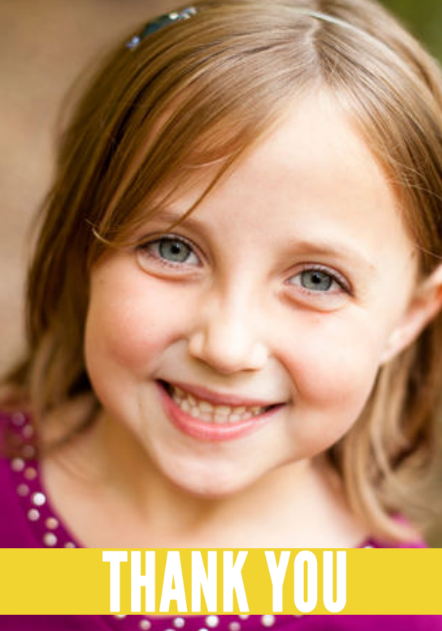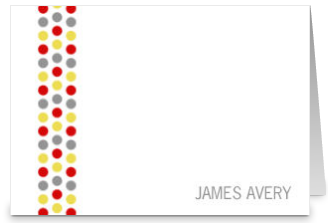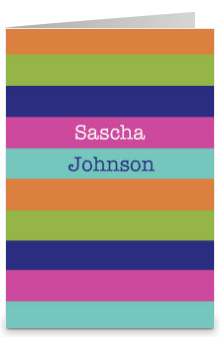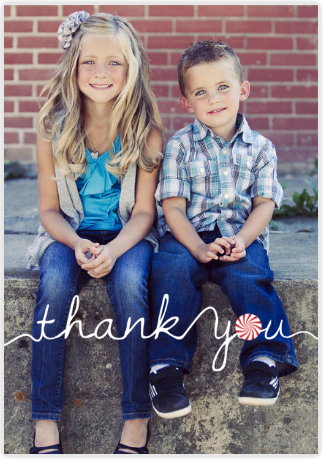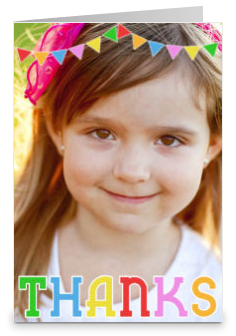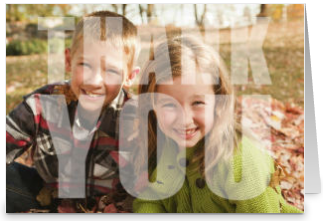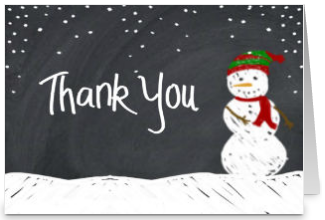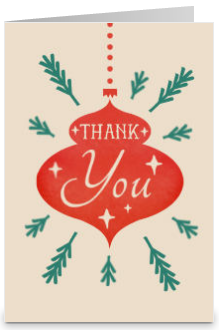5 Tips for Teaching Your Kids How to Write Thank-You Notes
Writing thank-you notes with kids can feel like a thankless task for parents, but it’s a very important lesson to teach. Here we are over a week into January and my kids’ thank-you notes just went out yesterday – and I haven’t even started mine (please don’t tell my children). I’m going to go ahead and justify prioritizing my kids notes before mine because it’s really important for kids to connect the joy of receiving with the importance of saying thanks – and if too much time goes by, it’s a missed teaching moment. In the tips below, I focus on writing thank-you notes for gifts since that’s what’s top-of-mind after the holidays, but it’s great to practice thank-you note writing with your kids for things other than “things” too, like special outings and activities. I’ve heard of parents allowing their children to just say thanks over the phone – or to send an email or text instead of a written thank-you. But there’s so much more to be gained when children put pen to paper. They feel pride, accomplishment, gratitude, empowerment and compassion – all extremely important emotions for developing happiness and self-confidence. But how do you get them to enjoy the process? Thanks for asking!
1. Model Appreciation & Gratitude Every time you open a gift in front of your children, model appreciation – even if you don’t like it. I’m not suggesting you act insincerely; just always spin your response toward gratitude. And make sure you kids witness your enjoyment of getting cards in the mail. Emails, texts and phone calls are instantaneous – there’s no element of delayed gratification. Just as there’s a build-up of anticipation when a child (or anyone for that matter) unwraps a thoughtfully packaged gift, there’s a reciprocal anticipation when someone opens a paper thank-you note. We all know the joy of finding a pretty, hand-addressed envelope amidst the bills and junk mail in our mailbox. Model appreciation and gratitude for those moments when you open personal letters. When your child sees the smile on your face, hears you comment on the thoughtfulness of receiving a handwritten card, and then sees that card propped up on a mantel or side table, you’re demonstrating the importance of a formal gesture that lasts a little longer than a call or an email.
2. Make Letter-Writing a Priority When a child opens a gift, make a big deal about how thoughtful the giver was. And comment right away about how you’ll have to write a really nice note. While no kid is going to race right over to the table to scrawl a heartfelt missive, hopefully when you ask them to write a letter within a few days (or weeks, ahem, as the case may be) they’ll associate that excited feeling they had with the importance of saying thanks. Make sure you make a list of thank-you notes that need to be written, or if your child is old enough, have him or her make the list. Set a date by which letters need to go out, build in a solid block of time to work on them, and delay another fun activity until the process is complete.
3. Gather Fun Materials By gathering all the materials they’ll need, including custom cards, colorful pens and perhaps a few ink stamps and stickers, you make thank-you note writing into a fun activity rather than a chore. I had always been a big proponent of kids making cards because I felt that a blank sheet of paper allowed them to be creative. But my kids recently invaded my stationery drawer and made off with some pretty Mixbook cards I had set aside for my own thank-you notes. Since they heisted mine, I decided to order each of them their own set of custom thank-you cards. I went with a photo option, but you can also order cards that are inspired by specific holidays, or simple stationery personalized with their name.
From the desk of…
My kids love writing on an actual thank-you card and feel really grown up to have the right materials. I pulled out some gel pens in fun colors and my six-year-old promptly wrote three thank-you notes in one sitting – including some corresponding hand-drawn artwork to adorn the interior. My four-year-old also got into the fun, drawing ninjas (to represent the toy he’d received) all over one side of a card. On the other side I wrote a few sentences based on what he wanted to say, then let him sign his name. If your children can write, they should do their best on their own, no matter how messy. Praise them for their efforts and tuck a post-it note that decrypts the message inside the envelope if you have to. If your child can’t write yet, go through the process together and make sure you get their thoughts down in their words. Once the notes are written, address the envelopes yourself if there are potential legibility issues, and have your kids put the return address stickers and stamps in place. They’ll take enormous pride in following through on such a grown-up activity.
4. Teach Sincerity If your children loved what they received, ask them to start their note by expressing their thanks. Instead of dictating “Dear so-and-so, thank you for the fill-in-the-blank,” encourage them to express a genuine reaction first by asking, “what did you think when you first opened your gift?” If they say, “Wow!” ask them to write, “Dear grandma, Wow!” Then have them follow with the standard sentence “thank you for the awesome gift…” or however they want to phrase it. Have them follow with a few examples of what they’ve done with their gift so far – and how they’ll use it in the future. And if your child didn’t like what they got, teach them to focus on the intention of the giver and how that alone was something to feel good about. Say your 12-year-old daughter got an ugly sweater from grandma: emphasize how sweet it was that grandma wanted her to be warm and, in her mind, cute too. Have her close her thank-you note with a thought on enjoying the gift together or being together sometime soon.
5. Encourage Follow-Up Perhaps a week after you send your thank-you notes, ask your kids to follow up. Now’s the time for a phone call! Have your child call grandma or auntie or whomever sent the gift and ask, “did you get my card?” Hearing the appreciation and excitement in their voice will encourage future letter writing.
For letters down the road, remember that one of the best things you can do with all the artwork that comes home from school is fold it up into a card, have your child write a note on it, and put it in the mail. You’ll clear some of your clutter, teach your child about the importance of communicating, and make someone’s day! Not bad for one simple exercise.
Happy Mixbooking! Happy thanking!
